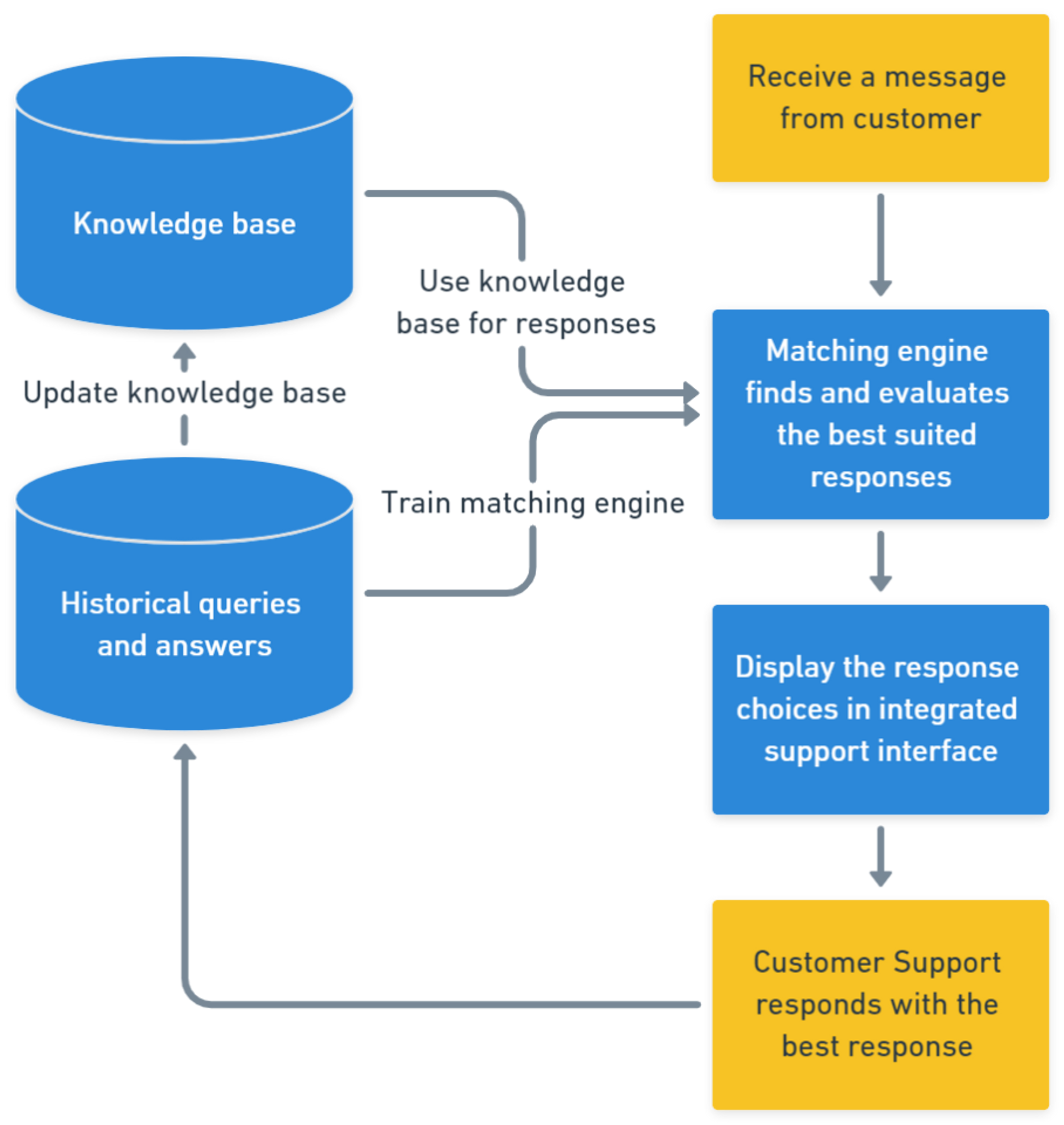What is Savvier?
An additional software layer on top of any ticketing or communication software for customer support.
It finds the best replies to a customer query, increasing the support staff efficiency or even automating part of the responses.
The system consists of few interconnected parts:
- Knowledge base that contains all approved / appropriate answers to customer queries
- Machine learning based matching engine that finds the best response from knowledge base
- The historical data training process that teaches the matching engine on what the right answers are for the specific business
- Integration layer with helpdesk / customer support platform used by your business





